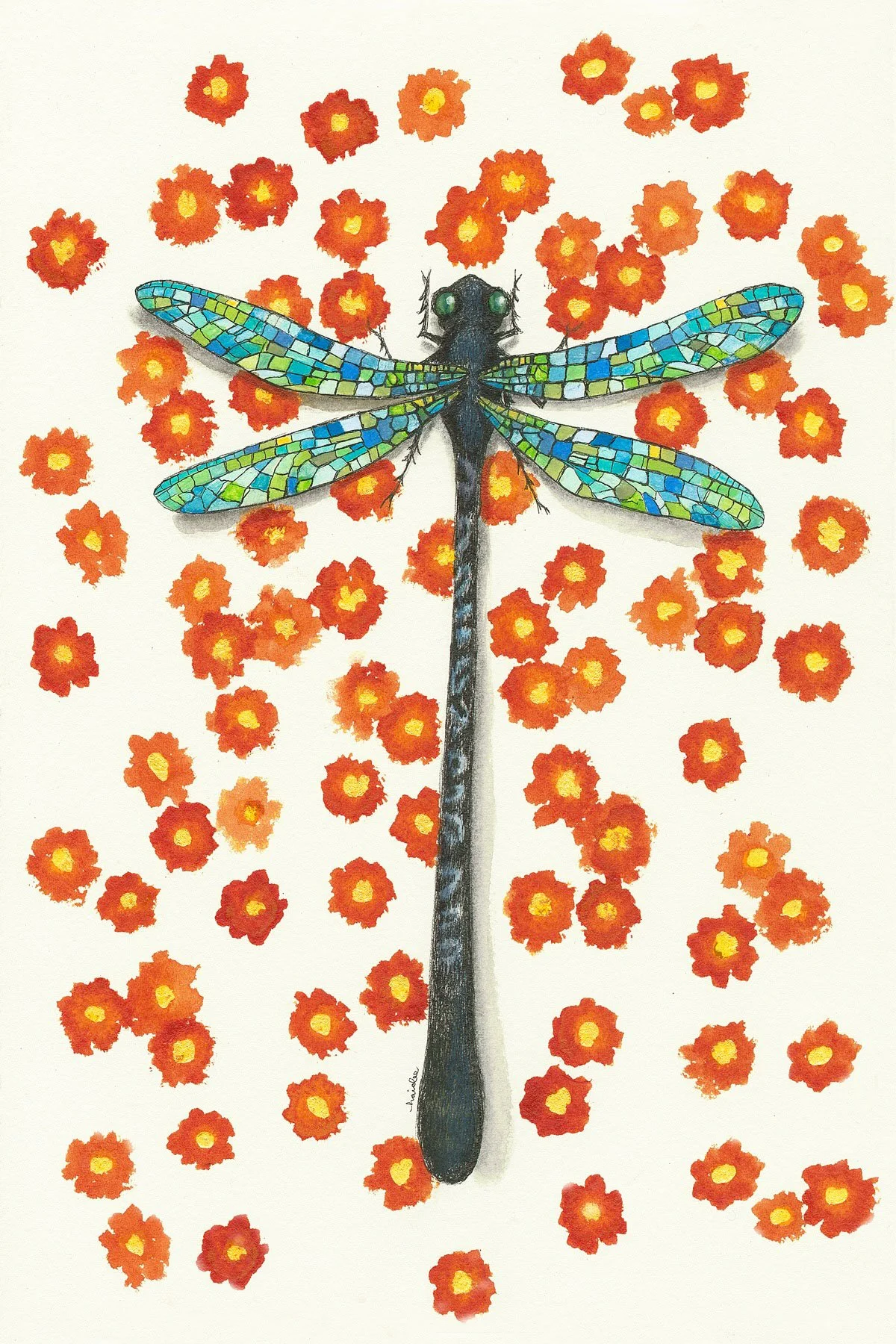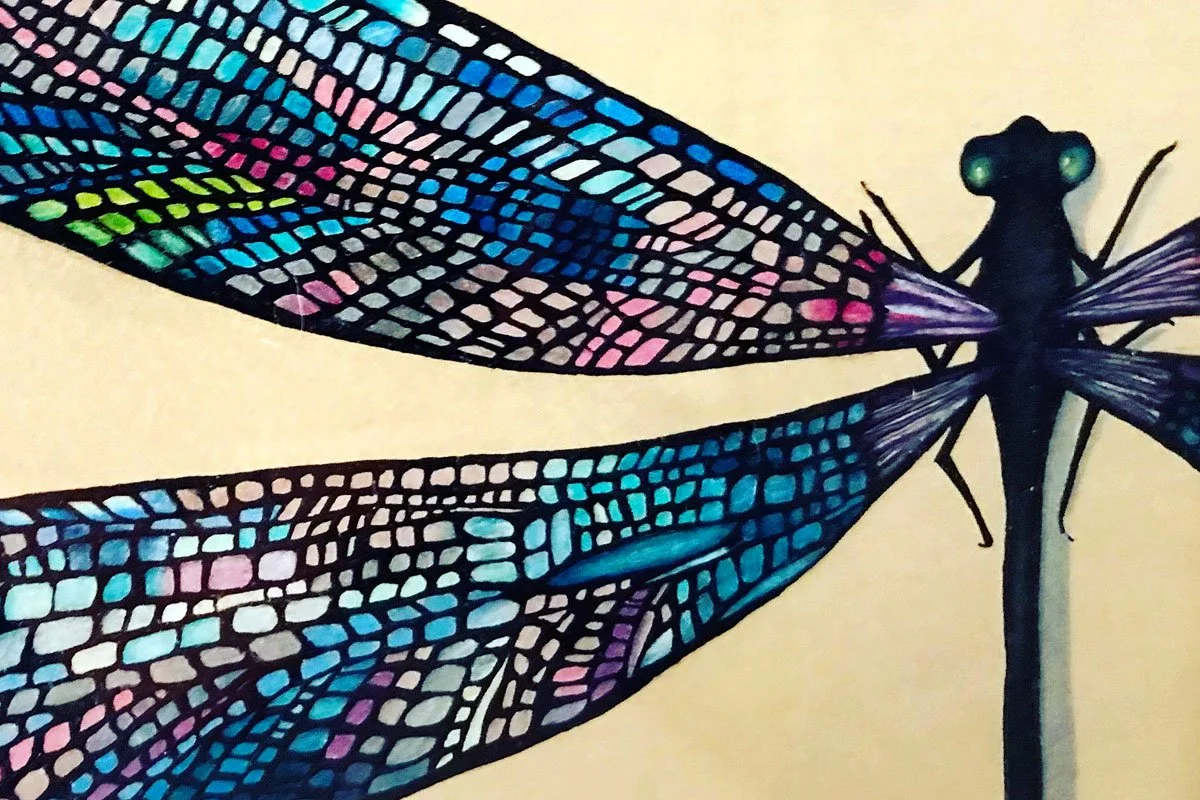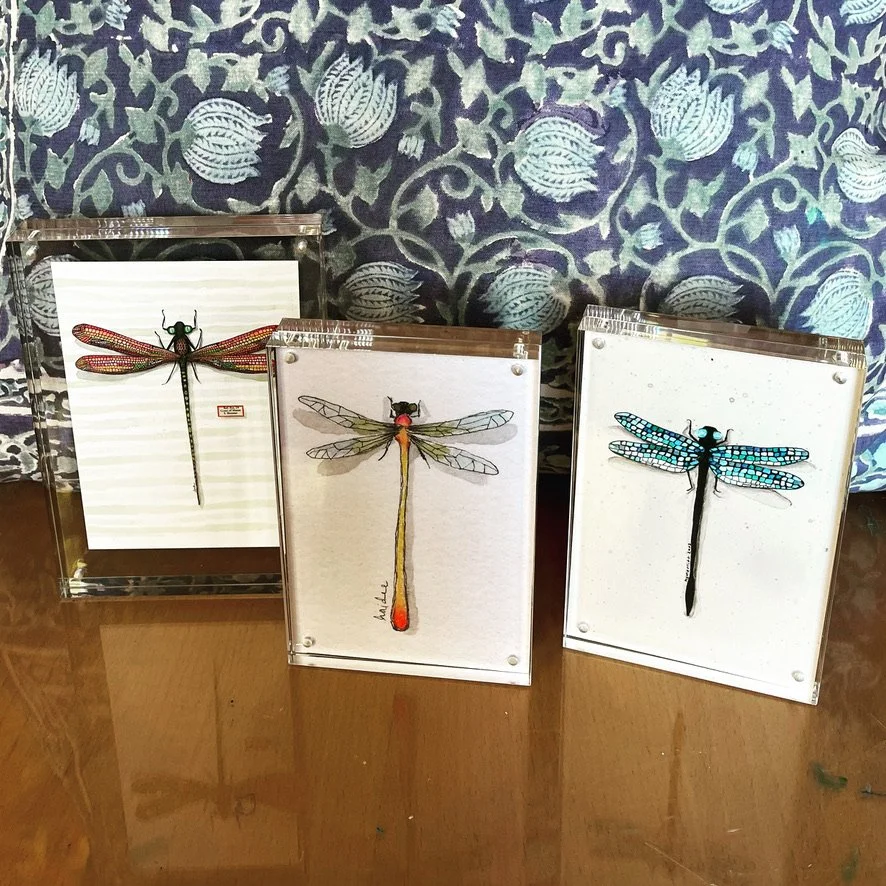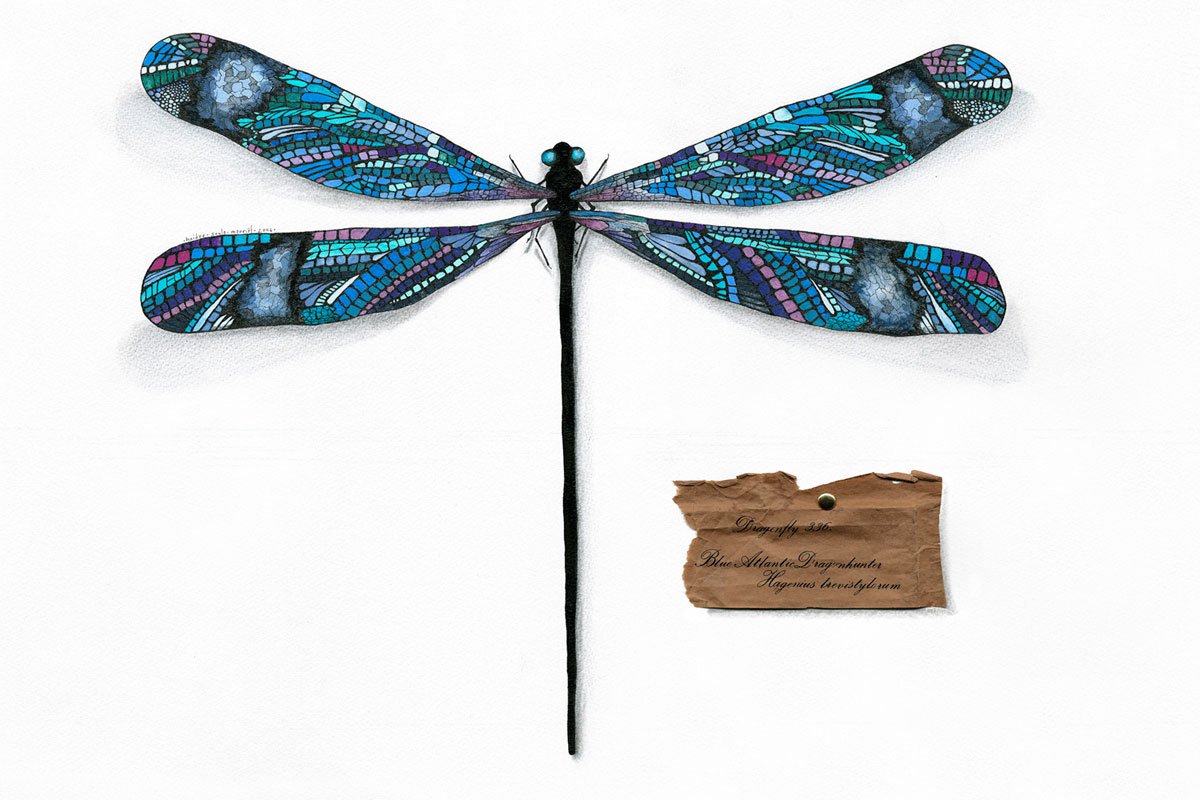There exists, far from the mapped paths and measured skies, a dragonfly so rare and delicately formed it was long believed to be a botanical hallucination. Aeshnura vitraflora, known by its colloquial moniker “The Blue-Paned Coreopsis Glasswing,” is a masterwork of aerial translucence—neither entirely insect nor illusion, but something in between, as if conjured from heat shimmer and flower scent.
The specimen presented here, No. 54, was first described and collected by Dr. Lisette Harrow, a British entomologist and botanical mystic whose extensive travels in the Brazilian highlands led to a number of floral reclassifications—but it was her encounter in the Serra do Segredo basin that rewrote her life’s purpose. On the evening of 12 September 1889, during what she referred to in her field notes as “an ecstatic dusk,” Dr. Harrow observed an impossible shimmer above a cluster of Coreopsis tinctoria rubralux, a now-rare cultivar with petals in hues of crimson, coral pink, and gold-centered aureoles. There, poised motionless in the amber light, hovered the Darner.
The dragonfly’s wings are its most striking feature—each one like a small window pane, with shades of pale green and river-glass blue traced by an ultrafine black venation that resembles leaded stained glass. When backlit, the wings refract the sun into prismatic halos, casting ephemeral rainbows on nearby leaves. The structural transparency of the wings is such that the landscape behind them is slightly magnified, as though seen through curved antique glass.
Close inspection of the eyes (undertaken only after the specimen’s natural death, as Dr. Harrow was famously averse to netting rare flyers) revealed a honeycomb lattice of photoreceptors uniquely adapted to the spectrum of reds and golds emitted by its host flower. It is believed this species cannot distinguish green from background vegetation, and instead locates its habitat purely through thermal and chromatic contrasts.
It nests exclusively in mature stands of Coreopsis rubralux, inserting its eggs into the hollow stems just beneath the blooms. No other plant has been known to support its life cycle. Attempts to breed A. vitraflora in similar flora have failed entirely, suggesting a symbiotic relationship more akin to orchid bees than to any other dragonfly. Furthermore, the plant itself appears to produce a scent compound only when visited by this specific insect, a musky-floral note reminiscent of sweetgrass and citrus rind—undetectable in the absence of the dragonfly.
Only eleven verified sightings have occurred since 1890. Most have taken place near the red-gold blooming cycles of C. rubralux, which itself is now endangered and found only in isolated gullies of protected cerrado, or vast savannas. No living colony has been documented since 1983, though anecdotal sightings persist—mostly from botanists and field artists whose reports include terms like “celestial” and “unreal.”
To see the Coreopsis Glasswing is to witness a moment that should not exist—an inheritance of color and silence, bound together by wind, nectar, and the precision of vanishing things.
Note: High quality archival glicée print on acid-free paper, a method that creates fine art reproductions with exceptional color accuracy and longevity. Pigments-based inks are designed to resist fading and discoloration and capture the finest details and subtle color variations with great precision.
Housed in a 4×6” crystal-clear acrylic specimen block, its 1” depth allows freestanding display. Each piece is designed to exhibit on desk or shelf.
Fly Design uses a practice known as entonology — the study of fictitious insects — to reimagine the natural world through scientific storytelling and poetic design.









